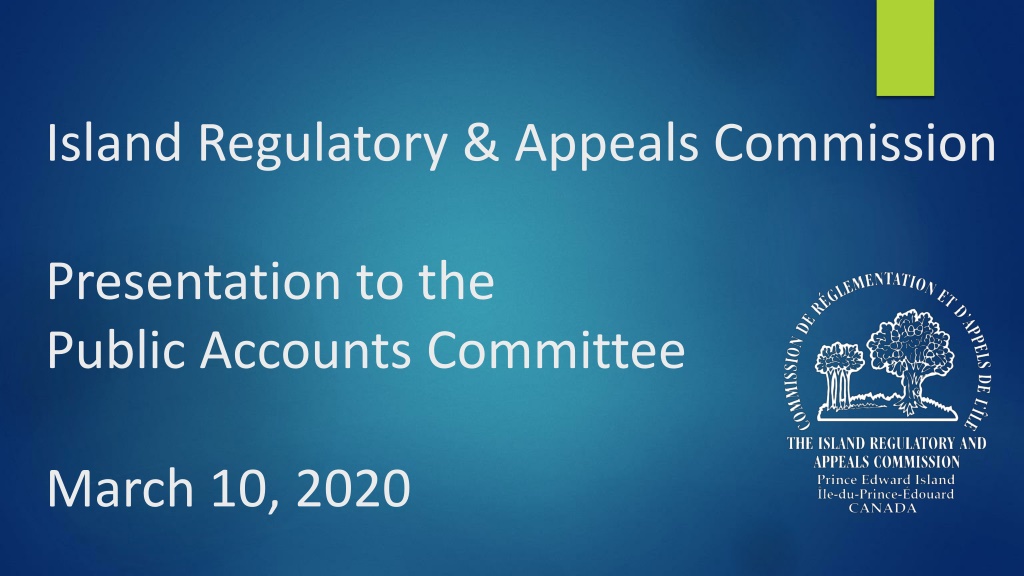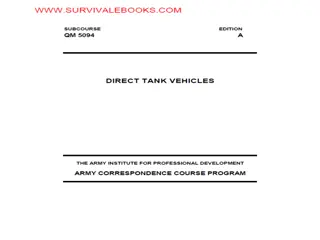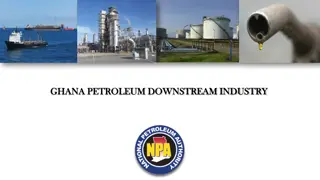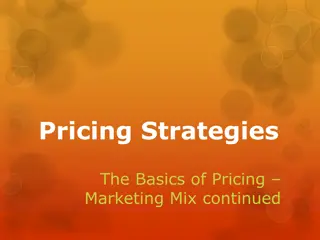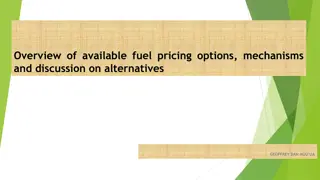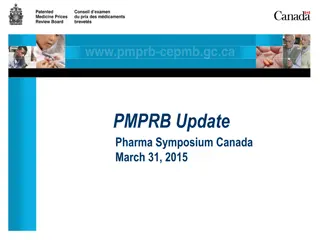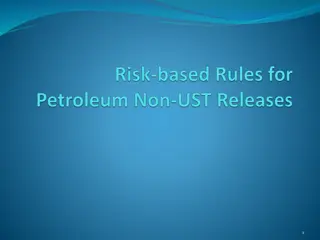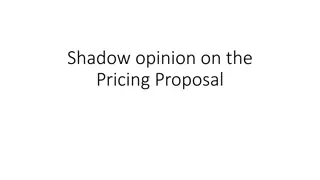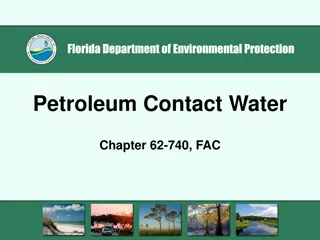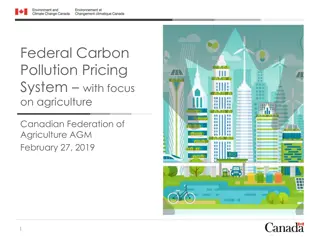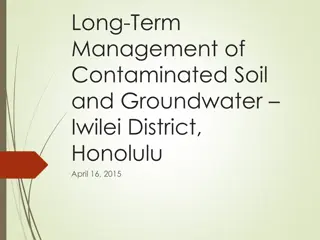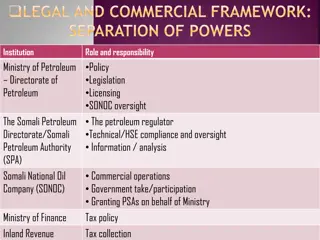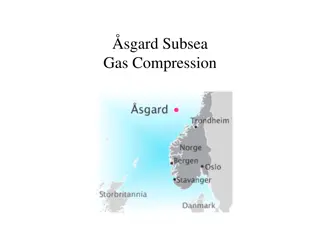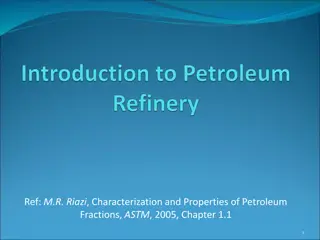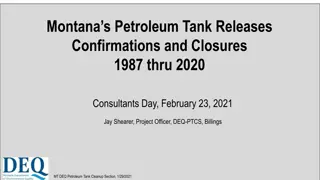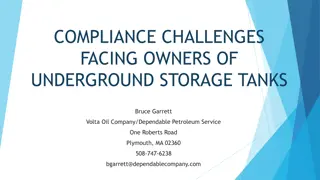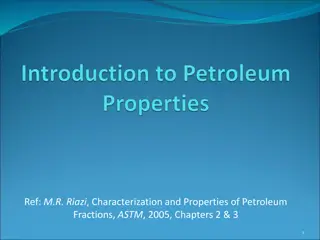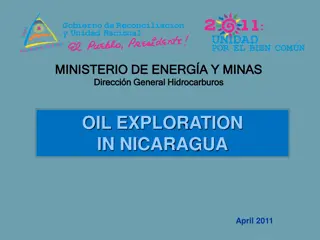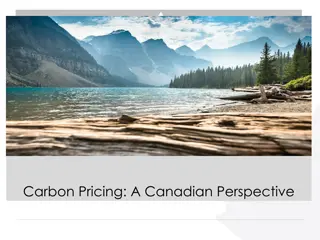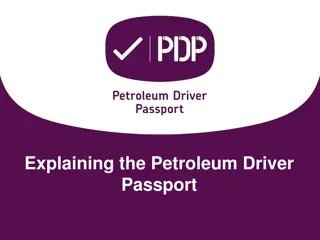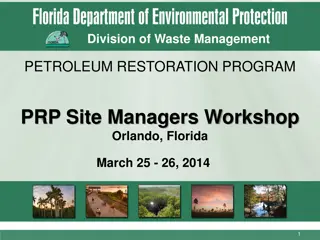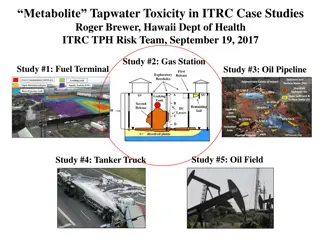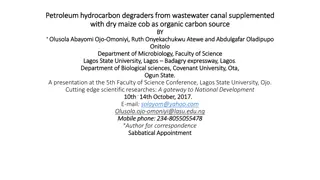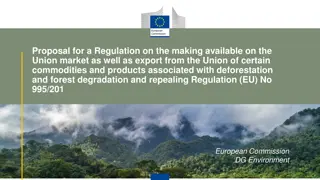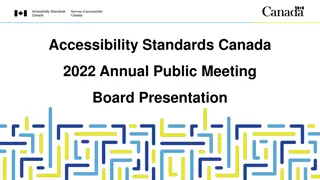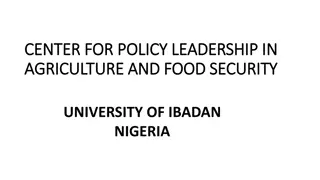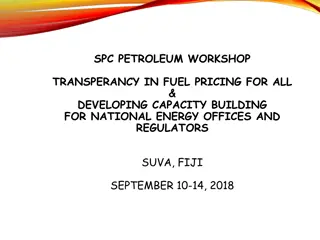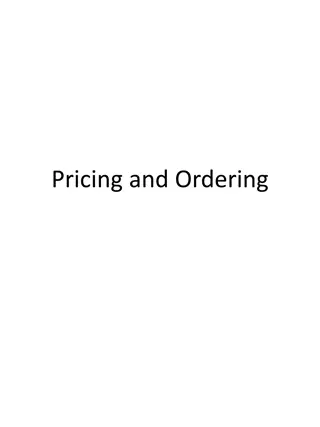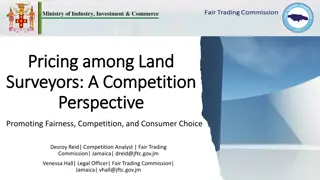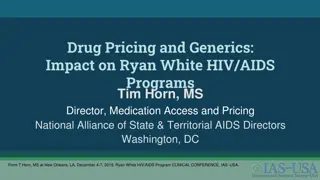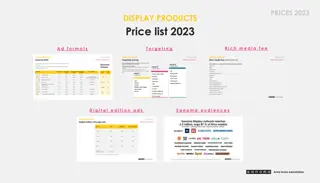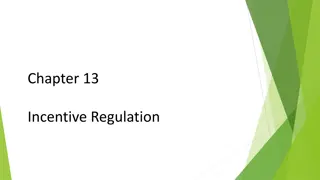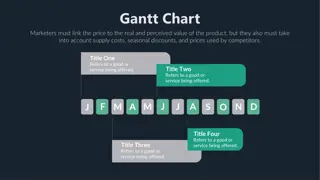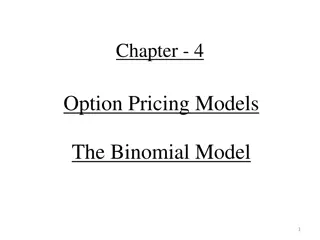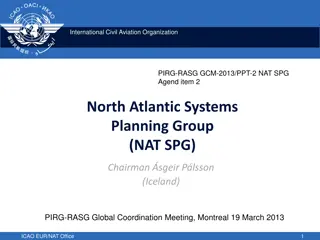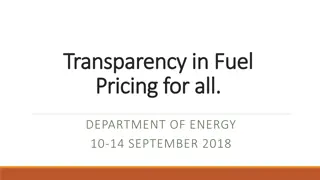Regulation of Petroleum Products and Pricing in Atlantic Canada
Island Regulatory & Appeals Commission (IRAC) in Prince Edward Island plays a crucial role in regulating the distribution and pricing of petroleum products within the province. The Petroleum Products Act ensures fair pricing for consumers and licensees, with IRAC overseeing price regulation and licensing. This presentation highlights the legislative mandate, regulatory functions, and pricing regulations in Atlantic Canada, including minimum and maximum pricing set by different provinces.
Download Presentation

Please find below an Image/Link to download the presentation.
The content on the website is provided AS IS for your information and personal use only. It may not be sold, licensed, or shared on other websites without obtaining consent from the author. Download presentation by click this link. If you encounter any issues during the download, it is possible that the publisher has removed the file from their server.
E N D
Presentation Transcript
Island Regulatory & Appeals Commission Presentation to the Public Accounts Committee March 10, 2020
Outline 2 Overview Petroleum Products Act Petroleum regulation in Canada Pump price comparison Weekly pricing Petroleum pricing Volumes sold Recent changes
IRAC Overview 3 Regulatory Functions Quasi-judicial Functions Regulations Lands protection regulation Petroleum products regulation Regulations and Rate Setting Electricity regulation and rates Water and sewer utility rates Auto insurance rates Petroleum licenses and prices IWMC Fees Rental Residential and rental property regulation Appeals Planning and municipal appeals Rental appeals Property tax appeals Environmental appeals
Petroleum Products Act 4 Legislative mandate: The purpose of this Act is to regulate the distribution and sale of petroleum products within the Province of Prince Edward Island for use within the province, and the type, location, and operation of facilities and equipment associated therewith, and to ensure at all times a just and reasonable price for heating fuel and motor fuel to consumers and licensees within the province. Ensures Islanders have access and pay the same price regardless of where they live.
Petroleum Products Act 5 The Commission s responsibility as a regulator is more comprehensive than in the other provinces. Set minimum and maximum prices for petroleum prices Determine the minimum and maximum margins for retailers License outlets operated by retailers, wholesalers, and wholesale-retailers Issue retail, wholesale, and wholesale-retailer petroleum product licenses
Petroleum Pricing Regulation in Canada 6 PEI first province to adopt price regulation Newfoundland and Labrador began price regulation in 2001 New Brunswick and Nova Scotia followed in 2006 All regulate gas prices through a utility commission
Regulation in Atlantic Canada 7 PEI & NS set a minimum and maximum price NB & NL set a maximum price only NS & NB only publish price adjustments on their websites Prices in regulated markets more stable than unregulated markets In unregulated markets pump prices can change several times a day In BC, an unregulated market, a recent review of retail gas prices by the utility commission raised serious concerns about the high price of gas and as a result, regulation is now being considered
Gas Pump Price Comparison 9 2017 2018 2019
July 2018 July 2019: 13 interruptions (gas) 7 decreases, 6 increases 10 Date Gasoline Date Gasoline Oct 20/18 5 cpl April 27 5 Nov 8 3 May 4 3 Nov 28 3.1 June 6 6 Dec 20 2 June 29 7 Jan 11/19 3 July 25 4 Feb 21 4 April 9 3 April 13 4.7
Weekly Pricing 11 July 2018 - July 2019: volatile petroleum market with large and frequent price fluctuations 13 gasoline interruptions: 7 decreases, 6 increases Consulted with industry Implemented weekly pricing August 2019 Weekly pricing allows for price setting that more accurately reflects the market price of the product Aligned with other Atlantic provinces who adjust petroleum prices weekly Today is the first interruption since weekly pricing was introduced
12 Petroleum Pricing Breakdown Gasoline Furnace Oil Diesel Charlottetown rack price in cpl + wholesale margin 5.0 cpl + federal excise tax 10.0 cpl + provincial gas tax 8.47 cpl + carbon levy 4.42 cpl + retail margin (6.0 - 7.0 cpl self-serve and 6.0 - 10.5 cpl full-serve) + HST (15%) = retail pump price in cpl Charlottetown rack price in cpl + wholesale/retail margin 21.0 cpl + GST (5.0%) = maximum retail price in cpl Charlottetown rack price in cpl + wholesale margin 5.0 cpl + federal excise tax 4.0 cpl + provincial gas tax 14.15 cpl + carbon levy 5.37 cpl + retail margin (6.0 - 7.0 cpl self-serve and 6.0 - 10.5 cpl full-serve) + HST (15%) = retail pump price in cpl
New York Harbour Price/Charlottetown Rack Price 13 Petroleum is a commodity traded on the New York Mercantile Exchange The Commission sets petroleum prices starting with the New York Harbour price Charlottetown rack price is the price of delivery of refined product to Charlottetown set by oil companies Charlottetown rack price rises and falls according to changes in the New York Harbour price Prices change daily and usually several times a day PEI is supplied by Irving refinery in St. John N.B.
Commission Pricing Model 14 The Commission s pricing model tracks data on a daily basis: New York Harbour commodity prices and Charlottetown rack prices are recorded daily in our database petroleum model Conversions are made from gallons to litres and exchange rate from $USD to $CAD Pricing model records and calculates the daily, and average weekly, monthly, and year-to-date prices Actual sales volumes, collected from licensees, are used to determine the weighted average calculations - daily, weekly, and monthly - to ensure wholesalers and retailers earn their allowable margin Using this information, the Petroleum Panel sets prices for the coming week
Petroleum Pricing Methodology 15 The Petroleum Panel follows a set pricing methodology : The Panel reviews three prices: the daily price for each petroleum product the average change in the rack price for each petroleum product over the prior one-week period and the year-to-date weighted average price for each petroleum product calculated using actual volumes sold A review of the Director s report summarizing current market trends This process determines the price adjustments
World events impact supply and demand affecting price 16 Global crude pricing down approx 30% due to Coronavirus China is the world s 2nd largest consumer of petroleum products Restricted air travel Cancellation of public events Reduced economic activity OPEC, Russia, and Saudi Arabia production
Petroleum Product Sales (Litres) 17 237,898,991 136,806,881 89,188,874 30,771,653 494,666,399 2019 furnace & stove oil TOTAL gasolines diesel fuel propane 233,316,295 132,971,083 84,825,638 29,859,530 480,972,546 2018 furnace & stove oil TOTAL gasolines diesel fuel propane
Recommendations & Responses 18 Actions taken: The Commission s pricing methodology was documented in the form recommended by the Auditor-General Expanded the description of pricing methodology on website Added more detailed information on current petroleum prices Published the policy for unscheduled price adjustments Developed a financial tool, with industry input, to assess the adequacy of margins for retailers Next review of retail furnace oil margins will be 2021, for changes Jan 1, 2022 Wrote to the Director of Legal Services requesting amendments to the Petroleum Products Act
Petroleum Prices March 10, 2020 20 Prices Cdn Cents Per Litre Self-Serve RETAIL PUMP PRICES Regular Gas Diesel Furnace Oil Benchmark Price 55.5 57.9 Benchmark Price 54.5 + Wholesale Margin 5.0 5.0 + Retail Margin 21.0 = Base Price 60.5 62.9 = Maximum Price 75.5 + Fed Excise Tax 10.0 4.0 + Tax (5%) 3.8 + Prov Tax 8.47 14.15 = Max Price (Incl Tax) 79.3 + Carbon Levy 4.42 5.37 = Wholesale Price 83.4 86.4 Min Max Min Max + Retail Margin 6.0 7.0 6.0 7.0 + HST (15%) 13.4 13.6 13.9 14.0 = Pump Price 102.8 104.0 106.3 107.4
National Price Comparison March 10, 2020 21 Gasoline Self-Serve Diesel Self-Serve Furnace Propane Cents Per Litre Incl Tax Diff to PE Incl Tax Diff to PE Incl Tax Diff to PE Incl Tax Diff to PE Charlottetown 102.8 -- 106.3 -- 79.3 -- PE 79.6 -- NB Maximum 113.6 +10.8 119.2 +12.9 105.8 +26.5 NB 93.3 +13.7 Moncton 109.7 +6.9 117.6 +11.3 105.8 +26.5 Fredericton 110.3 +7.5 116.8 +10.5 105.8 +26.5 Halifax 105.9 +3.1 108.6 +29.3 New Glasgow 107.0 +4.2 111.2 +31.9 Montreal 112.7 +9.9 Ottawa 100.0 (2.8) Toronto 102.6 (0.2) Vancouver 138.2 +35.4 National Avg 107.7 +4.9
Questions 22
